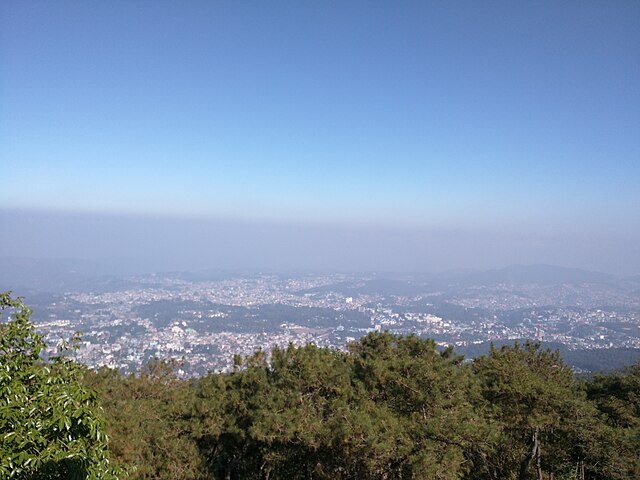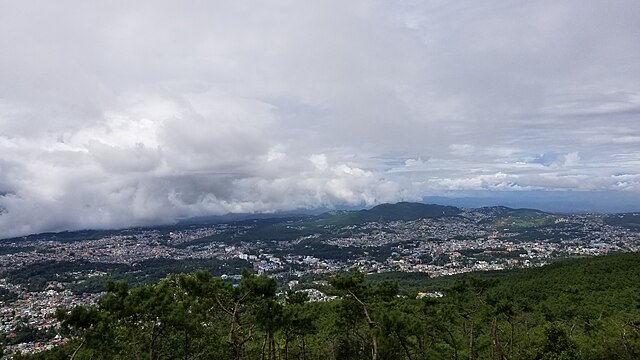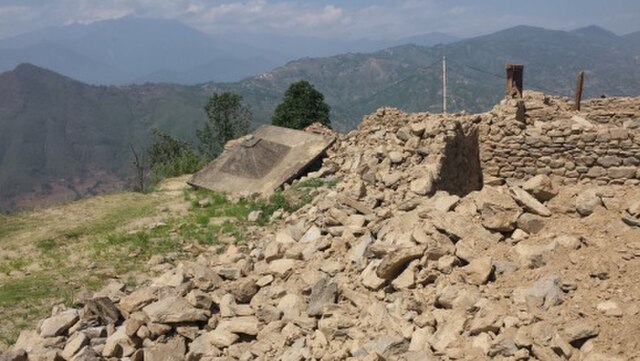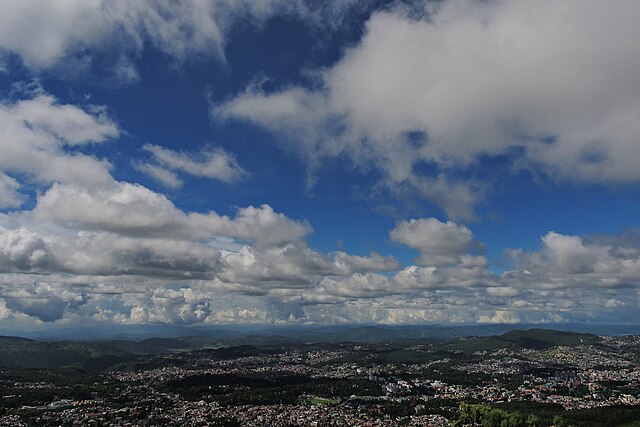Have you ever wondered what it feels like to stand atop the highest point of an entire state, gazing out over rolling hills that stretch as far as the eye can see? Welcome to Shillong Peak, the magnificent summit that crowns Meghalaya and offers visitors an unforgettable experience in India’s northeastern paradise.
At 6,449 feet above sea level, Shillong Peak isn’t just another tourist destination – it’s a gateway to understanding the natural beauty and cultural richness of Meghalaya. This towering giant serves as the highest point in the state, offering panoramic views that will leave you breathless and memories that last a lifetime.
What Makes Shillong Peak Special?
Geographic Significance and Location
Shillong Peak stands proudly about 10 kilometers south of Shillong city, serving as the state’s crowning glory. This natural wonder is part of the Shillong Plateau, which forms the backbone of Meghalaya’s topography. The peak’s strategic location provides visitors with 360-degree views of the surrounding landscape, including the sprawling city of Shillong, dense forests, and the distant plains of Bangladesh.
The geographic importance of this peak extends beyond its height. It acts as a natural watershed, influencing the region’s climate and supporting diverse ecosystems that thrive in its shadow. The peak’s position also makes it a crucial landmark for navigation and weather monitoring in the region.
Cultural and Historical Importance
For the indigenous Khasi people, Shillong Peak holds deep spiritual significance. Known locally as “U Lum Sohpetbneng,” which translates to “the navel of heaven,” this peak is considered sacred in Khasi mythology. According to local legends, this is where the divine touched the earth, making it a place of reverence and spiritual connection.
The peak has witnessed centuries of cultural evolution, from ancient tribal settlements to colonial influences and modern development. British administrators recognized its strategic importance during the colonial era, using it as a reference point for mapping and administrative purposes.
Getting to Shillong Peak: Your Journey Begins

Transportation Options from Major Cities
Reaching Shillong Peak is an adventure in itself, and you’ve got several options depending on your starting point. If you’re flying in, Guwahati’s Lokpriya Gopinath Bordoloi International Airport is your closest major airport, located about 125 kilometers from Shillong. From there, you can hire a taxi or take a bus to reach the city.
For those preferring train travel, Guwahati Railway Station serves as the nearest major railhead. The journey from Guwahati to Shillong takes approximately 3-4 hours by road, winding through scenic hills and valleys that serve as a perfect preview of what awaits you.
Best Routes and Travel Tips
The most popular route to Shillong Peak from the city center involves taking the Shillong-Mawkyrwat road. The final stretch to the peak requires a short but steep drive up a well-maintained road. During peak tourist season, expect some traffic, but the journey itself becomes part of the experience as you wind through pine forests and catch glimpses of the valley below.
Pro tip: Start your journey early in the morning to avoid crowds and witness the magical transformation of the landscape as the sun rises. The roads can be narrow in some sections, so if you’re driving yourself, maintain a steady pace and be courteous to other travelers.
What to Expect at Shillong Peak
Breathtaking Panoramic Views
Standing at Shillong Peak feels like being on top of the world – quite literally! The 360-degree panoramic views offer a visual feast that changes throughout the day. To the north, you’ll see the sprawling city of Shillong with its red-roofed houses dotting the landscape like scattered gems. The southern view reveals the vast plains of Bangladesh stretching into the horizon, while the eastern and western vistas showcase rolling hills covered in lush greenery.
The observation deck at the summit provides the perfect vantage point for soaking in these views. On clear days, the visibility extends for miles, allowing you to spot landmarks, rivers, and even distant mountain ranges. It’s like having a bird’s-eye view of Mother Nature’s masterpiece.
Weather Conditions Throughout the Year
Monsoon Season (June-September)
During monsoon months, Shillong Peak transforms into a misty wonderland. The frequent rainfall creates a mystical atmosphere with clouds often engulfing the peak, creating an ethereal experience. While visibility might be limited during heavy rains, the post-rain clarity offers some of the most spectacular views you’ll ever witness.
Winter Months (October-February)
Winter brings crisp, clear air that’s perfect for sightseeing. Temperatures can drop significantly, especially during early morning and evening hours, so warm clothing is essential. This season offers the best visibility and comfortable weather for extended stays at the peak.
Summer Period (March-May)
Summer months provide pleasant weather with moderate temperatures and clear skies. This is perhaps the most comfortable time to visit, with minimal rainfall and excellent visibility. The mild climate makes it ideal for photography and outdoor activities.
Activities and Attractions at Shillong Peak
Photography Opportunities
For photography enthusiasts, Shillong Peak is nothing short of paradise. The changing light throughout the day creates different moods and atmospheres, from the golden hues of sunrise to the dramatic shadows of sunset. Landscape photographers will find endless opportunities to capture the rolling hills, cloud formations, and distant cityscapes.
The peak also offers excellent opportunities for portrait photography against the backdrop of endless hills. Many visitors enjoy capturing silhouettes against the sky, creating dramatic and memorable images that perfectly encapsulate their visit.
Trekking and Nature Walks
While the peak itself is accessible by road, the surrounding area offers numerous trekking opportunities for adventure enthusiasts. Short nature walks around the peak allow visitors to explore the local flora and fauna while enjoying different perspectives of the landscape.
These walks are suitable for most fitness levels and provide opportunities to spot local bird species and enjoy the fresh mountain air. The trails are generally well-marked, but it’s always wise to inform someone about your plans if you venture off the main paths.
Sunset and Sunrise Viewing
There’s something magical about watching the sun rise or set from Shillong Peak. The elevated position provides an unobstructed view of the horizon, making it one of the best spots in Meghalaya for celestial viewing. Sunrise visits require an early start, but the reward of watching the world wake up beneath you is incomparable.
Sunset viewing is equally spectacular, with the sky often painting itself in brilliant oranges, pinks, and purples. The transition from day to night, with city lights beginning to twinkle below, creates a romantic and peaceful atmosphere that many visitors describe as transformative.
Best Time to Visit Shillong Peak
Peak Season Recommendations
The ideal time to visit Shillong Peak is during the post-monsoon and winter months, from October to February. During this period, you’ll enjoy clear skies, excellent visibility, and comfortable temperatures. The air is crisp and clean, providing the best conditions for photography and sightseeing.
This period also coincides with several local festivals, adding cultural richness to your visit. However, being peak season means more crowds and higher accommodation costs, so advance booking is recommended.
Off-Season Advantages
Visiting during the off-season, particularly during the lighter monsoon months or early summer, offers its own unique advantages. You’ll encounter fewer crowds, better accommodation rates, and a more intimate experience with nature. The monsoon season, while challenging for visibility, provides a different kind of beauty with misty landscapes and fresh, rain-washed air.
Accommodation Options Near Shillong Peak

Luxury Resorts and Hotels
Shillong city offers numerous high-end accommodation options within a short drive of the peak. Luxury resorts provide stunning valley views, spa services, and fine dining experiences that complement your peak visit. Many of these establishments offer guided tours and transportation services to Shillong Peak.
These premium accommodations often feature traditional Khasi architecture blended with modern amenities, providing guests with an authentic yet comfortable experience. Some resorts even offer special sunrise and sunset tour packages to the peak.
Budget-Friendly Stays
For budget-conscious travelers, Shillong offers numerous guesthouses, hostels, and budget hotels that provide comfortable accommodation without breaking the bank. Many of these options are run by local families, offering insights into Khasi culture and hospitality.
Homestays are particularly popular among travelers seeking authentic experiences. These accommodations often include home-cooked meals featuring local cuisine and opportunities to participate in daily activities with host families.
Local Culture and Traditions
Khasi Heritage and Customs
The Khasi people have a rich cultural heritage that’s deeply connected to the land and natural features like Shillong Peak. Their matrilineal society, unique traditions, and spiritual beliefs create a fascinating cultural landscape that visitors can explore and appreciate.
Traditional Khasi music, dance, and storytelling often reference natural landmarks, including Shillong Peak. Engaging with local communities provides insights into how geography shapes culture and identity in this region.
Local Festivals and Events
Throughout the year, various festivals and cultural events take place in and around Shillong, many of which have connections to natural landmarks. The Shad Suk Mynsiem festival, celebrating the spring season, and other traditional celebrations offer visitors chances to experience authentic Khasi culture.
These events often feature traditional music, dance performances, and local cuisine, providing a comprehensive cultural experience that complements the natural beauty of the region.
Nearby Attractions Worth Exploring
Elephant Falls
Just a short drive from Shillong Peak, Elephant Falls offers a perfect complement to your peak visit. This three-tiered waterfall cascades through rocky terrain, creating a refreshing stop after your mountain adventure. The falls are easily accessible and provide excellent photography opportunities.
Umiam Lake
Known as the “Scotland of the East,” Umiam Lake presents a stunning contrast to the mountainous terrain of Shillong Peak. This artificial lake offers water sports, boating, and peaceful lakeside relaxation, making it an ideal addition to your itinerary.
Don Bosco Museum
For those interested in the cultural history of the region, the Don Bosco Museum provides comprehensive insights into the indigenous cultures of Northeast India. The museum’s seven floors showcase artifacts, traditional costumes, and cultural exhibits that help visitors understand the rich heritage of the area.
Essential Travel Tips for Visitors

What to Pack
Packing for Shillong Peak requires consideration of the variable mountain weather. Essential items include warm clothing for early morning and evening visits, comfortable walking shoes with good grip, a waterproof jacket for unexpected rain, and sun protection for clear days.
Don’t forget your camera, extra batteries, and perhaps a portable charger, as the stunning views will have you taking photos constantly. A small backpack for day trips and a water bottle are also recommended for comfort during your visit.
Safety Considerations
While Shillong Peak is generally safe for visitors, mountain environments require basic precautions. Stay on designated paths, be aware of weather changes, and inform others of your plans if you’re exploring alone. The peak can get foggy quickly, so visibility can change rapidly.
During monsoon season, roads can be slippery, so extra caution is needed when driving. It’s also wise to check weather conditions before heading out, especially for sunrise or sunset visits when you’ll be traveling in low-light conditions.
Conservation Efforts and Responsible Tourism
Shillong Peak’s natural beauty comes with the responsibility of preservation for future generations. Visitors are encouraged to follow Leave No Trace principles, disposing of waste properly and respecting the natural environment. Local conservation efforts focus on maintaining the ecological balance while accommodating tourism.
Supporting local businesses, respecting cultural sites, and being mindful of your environmental impact all contribute to sustainable tourism that benefits both visitors and local communities. Consider participating in or supporting local conservation initiatives during your visit.
Conclusion
Shillong Peak stands as more than just the highest point in Meghalaya – it’s a testament to nature’s grandeur and a window into the rich cultural heritage of the Khasi people. Whether you’re seeking breathtaking views, cultural insights, or simply a peaceful escape from urban life, this magnificent peak delivers an experience that resonates long after you’ve returned home.
From the moment you begin your ascent to the peak until you reluctantly bid farewell to its panoramic vistas, every aspect of your visit contributes to a deeper appreciation of northeastern India’s natural beauty. The combination of stunning landscapes, rich culture, and warm hospitality makes Shillong Peak a destination that calls you back time and again.
Your journey to Shillong Peak isn’t just a trip – it’s an investment in memories that will enrich your life and broaden your perspective on the incredible diversity that India has to offer.
Frequently Asked Questions
1. How long does it take to reach Shillong Peak from Shillong city center? The drive from Shillong city center to Shillong Peak typically takes 30-45 minutes, depending on traffic and weather conditions. The route is well-maintained but can be busy during peak tourist seasons, so it’s advisable to allow extra time for your journey.
2. Is Shillong Peak accessible for elderly visitors or people with mobility issues? Yes, Shillong Peak is accessible by vehicle right up to the observation area, making it suitable for elderly visitors and those with mobility challenges. The main viewing area doesn’t require significant walking, though the terrain can be uneven in some spots.
3. Are there entry fees or permits required to visit Shillong Peak? There are no specific entry fees for visiting Shillong Peak itself, but you may encounter small parking charges. No special permits are required for Indian citizens, though it’s always good to carry valid identification when traveling in northeastern states.
4. What’s the best time of day to visit Shillong Peak for photography? Early morning (sunrise) and late afternoon (sunset) offer the best lighting conditions for photography. The golden hour provides warm, soft light that enhances the landscape’s natural beauty. However, midday visits during clear weather also offer excellent visibility for landscape shots.
5. Can visitors camp overnight at Shillong Peak? Overnight camping is not officially permitted at Shillong Peak itself. However, there are several accommodation options in nearby areas and Shillong city. Some tour operators may organize special camping experiences in designated areas around the region, but these require proper permits and local guidance.

